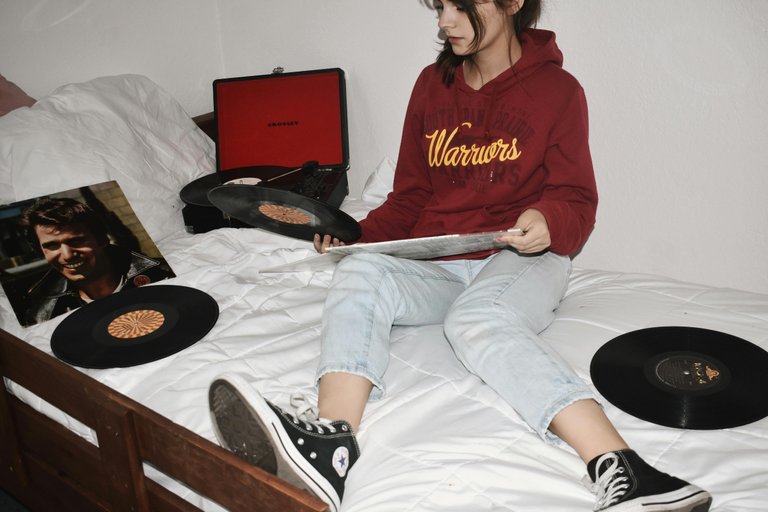Vinyl is popular again in the digital era.

As a teenager from the 2000s, I grew up in the digital age. Music can be found almost anywhere, from MP3 players to mobile phone streaming services. However, there is one surprising trend: vinyl is regaining popularity. Many people, including myself, wonder how this ancient-looking object can be so expensive yet still sell so well. After reading and asking about this, I have some thoughts to share.
Why Is Vinyl Expensive?
First, vinyl is expensive due to the difficult manufacturing process. Each vinyl record had to be printed with extreme precision and often in limited quantities. This makes each vinyl release a unique item. This limitation is why vinyl prices soar, especially when it is a special edition or the first release of a well-known album. I've seen first edition vinyl of my favorite bands for hundreds of dollars on the market!
Apart from that, vinyl production costs are higher than digital or CD formats. Vinyl mastering necessitates the use of specialized equipment and expertise. It's no surprise that vinyl costs more. This is a significant investment on both the producer and consumer side.
Different sound quality.
The sound quality of vinyl is one of the main reasons people continue to buy it. Many argue that vinyl produces a "warmer" sound with unique characteristics that digital formats cannot replicate. As someone who grew up with digital media, listening to music on vinyl is a thrilling new experience. The sound seems more alive and real.
I noticed a difference when I first started listening to vinyl. There is a nuance that is difficult to describe but palpable as if the music is richer and more authentic. Perhaps this is why many people are willing to pay more for vinyl.
Physical Experience and Nostalgia
The 2000s generation may be more used to the convenience of digital music. However, there is something special about having a physical album. Holding a vinyl record, seeing the large, detailed cover art, and preparing the turntable to play the vinyl all contribute to a more intimate and personal experience.
Nostalgia has also played an important role in vinyl's resurgence. Many people want to relive the days of listening to music on vinyl records. It's not just about listening to music; it's also about discovering how people used to enjoy it. I see this as a way to connect with history while also appreciating the advancement of music technology.
Retro Trends Among Teens
The retro trend isn't limited to vinyl. Film cameras, vintage fashion, and other antiques are regaining popularity among teenagers. We feel proud when we have something unique and different from others. Vinyl is becoming a part of the retro lifestyle.
As teenagers, we are constantly looking for ways to differentiate ourselves and stand out. Having a vinyl collection demonstrates your musical taste as well as a more classic and classy lifestyle. It can also be an interesting topic of discussion among friends.
Support your favorite artists.
Vinyl continues to sell for a variety of reasons, including the ability to support our favorite artists. In the digital age, streaming revenue is not always profitable for musicians. Purchasing vinyl means we are contributing more to artists, allowing them to continue creating. When I buy vinyl, I feel proud because I know I'm helping my favorite musicians advance their careers.
Conclusion
So, why does vinyl remain expensive while selling so well? The answer is a combination of rarity, distinct sound quality, physical experience, and a feeling of nostalgia. For the 2000s generation, like myself, vinyl is a way to relive the past while still enjoying music uniquely and more deeply. Even though it is expensive, the experience and satisfaction obtained are well worth the cost. Vinyl is more than just a musical medium; it is also a symbol of respect for the art and history of music.

Thank you for reading this far into my article. Hopefully, there is something you can get from what I have shared.